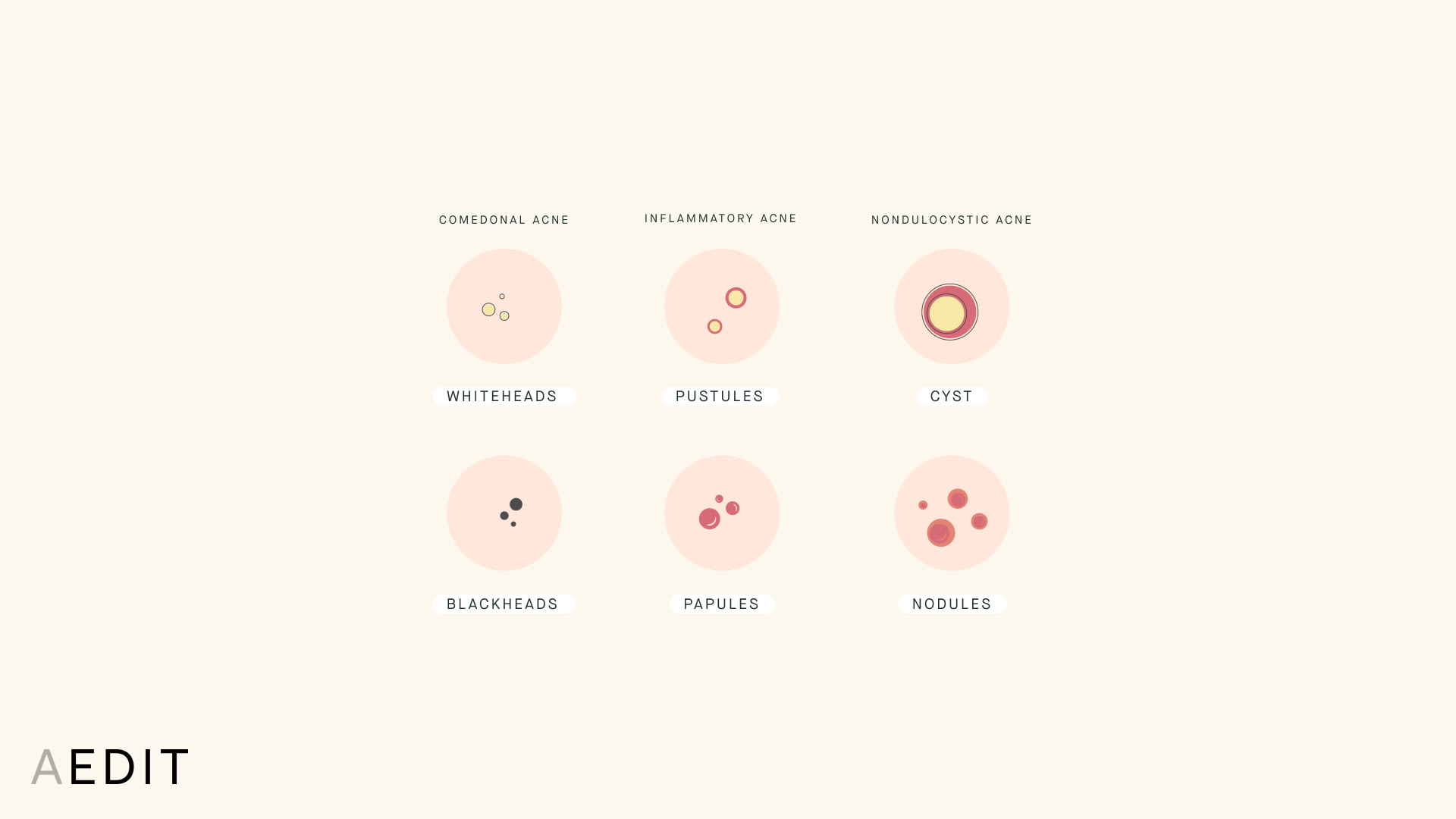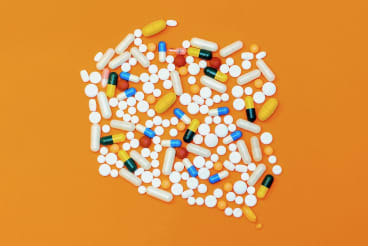 Accutane
AccutaneHow To Treat And Prevent Body Acne
Whether you experience it seasonally (hi, hot summer months) or chronically, body acne is both common and treatable. Top dermatologists break down everything you need to know.
Sure, the bulk of coverage and attention surrounding acne focuses on the face, but the skin condition isn’t limited to the skin above the neck. Whether you deal with it seasonally (think: warm, humid summer months) or chronically, body acne is both common and treatable. Once you identify the type of acne you’re experiencing, you can properly treat it with the help of a dermatologist. Oh, and there are also preventative lifestyle measures you can make to help keep breakouts at bay. Here’s everything you need to know about body acne.
What Causes Body Acne?
Acne of any kind occurs when hair follicles in the dermis get clogged. This can be caused by excess oil, dead skin cells, and bacteria (specifically, propionibacterium acnes). It should come as no surprise that the areas where acne is most common — like the face, back, and chest — are the areas that contain the highest number of sebaceous (read: oil) glands.
Breakouts below the neck will mostly appear on your chest, upper back (hello, backne), underarms, and buttocks. While body acne can occur to anyone at any time, both intrinsic (i.e. genetics, hormones, etc.) and extrinsic (i.e. climate, diet, exercise, etc.) factors play a role.
The upper back, for example, is prone to acne because it has a large number of oil glands but also because it’s a hard to reach area. “The back tends to be a very hard to reach area to clean and scrub, leading to extreme build up,” says Morgan Rabach, MD, a board certified dermatologist and co-founder of LM Medical in New York City.
How to Treat the Most Common Types of Body Acne
To best understand how to treat your body acne, you must first be able to identify what type of acne you are experiencing. Just like the face, both inflammatory and non-inflammatory breakouts are possible and there are different treatment protocols for each.
1. Comedonal Acne

Comedonal acne is non-inflammatory acne that presents as small bumps that are relatively mild and do not swell. Whiteheads (a.k.a. closed comedones) and blackheads (a.k.a. open comedones) are the most common types of comedones. The former occurs when the pore closes on top of a buildup of sebum and dead skin cells resulting in a small bump, while the latter occurs when the pore remains open — despite being clogged with excess oil and dead skin cells — causing a dark-colored spot on the surface of the skin.
- Treatment Recommendation: When trying to clear up comedonal acne, “the goal is to increase cellular turnover to unclog your pores,” says Adriana Lombardi, MD, a board certified dermatologist at the Skin Cancer & Cosmetic Surgery Center of New Jersey. The first line of defense is to use a body wash with alpha hydroxy acids (AHAs) or beta hydroxy acids (BHAs), like Glytone Exfoliating Body Wash. In case you needed another reason to reach for retinol, the superhero active can be used on the body to increase skin cell turnover and decrease oil gland production. “The easiest way to apply a retinol on your back is to use a foam formulation and place it on a bath sponge,” Dr. Lombardi shares. “After showering, dab it onto the affected area.”
2. Inflammatory Acne

Inflammatory acne refers to lesions that are red, swollen, and sometimes tender. While cystic acne and nodular acne (more on them below) technically fall into this category, we're focusing on papules and pustules. Papules are small, tender bumps that are red or pink in color, while pustules (a.k.a. pimples) form like papules but are infected and, therefore, filled with pus. These appear with a red base and white or yellow tip.
- Treatment Recommendation: Depending on the severity of the lesions, inflammatory acne may require professional attention. “I recommend a few weeks of an oral antibiotic,” Dr. Rabach says. The type of medication and length of time taken varies by patient. Some of the topical skincare that works to eliminate comedonal acne may also help to decrease oil production and calm inflammation. A dermatologist will be able to help you establish a comprehensive treatment plan.
3. Nodulocystic Truncal Acne

Otherwise known as cystic acne, nodulocystic truncal acne is usually severe and can cause emotional distress as well as deeper scarring. Generally speaking, cysts are pus-filled, inflammatory lesions that form deep in the skin and appear as red or white bumps at the surface. Nodules, meanwhile, are more severe cysts that occur when clogged pores are further irritated and deepen. Oil gland stimulation and bacteria play a role, but there is often a genetic component as well. ‘Truncal’ refers to the areas of the body — chest and back — where this type of nodulocystic acne most often presents.
- Treatment Recommendation: Isotretinoin (read: Accutane) tends to be the treatment option of choice for cystic acne on both the face and body. “It’s the closest thing we have to a ‘cure’ for acne because it targets the oil glands by shrinking them in size and decreases oil production,” Dr. Lombardi explains. The oral prescription is taken for four to six months (depending on the patient) and requires regular blood work. Your dermatologist will assess your case and determine if you are a candidate.
Lifestyle Changes to Prevent Body Acne
As with any breakout, the best way to treat body acne is usually to prevent it from happening in the first place. Before seeking advice from a dermatologist, you can try these lifestyle modifications to see if your skin improves.
- Reduce stress
- Drink plenty of water
- Remove sweaty clothes as soon as possible
- Workout in cotton shirts to allow your skin to breathe
- Shower immediately after workouts
- Avoid dairy, gluten, and refined sugar to help reduce systemic inflammation
While not all kinds of body acne will resolve on their own, the tips above are more than skin deep — they are beneficial to overall health and wellbeing regardless of your skin type.
All products featured are independently selected by our editors, however, AEDIT may receive a commission on items purchased through our links.
More Related Articles
Related Procedures

AI Plastic Surgeon™
powered by'Try on' aesthetic procedures and instantly visualize possible results with The AI Plastic Surgeon, our patented 3D aesthetic simulator.

